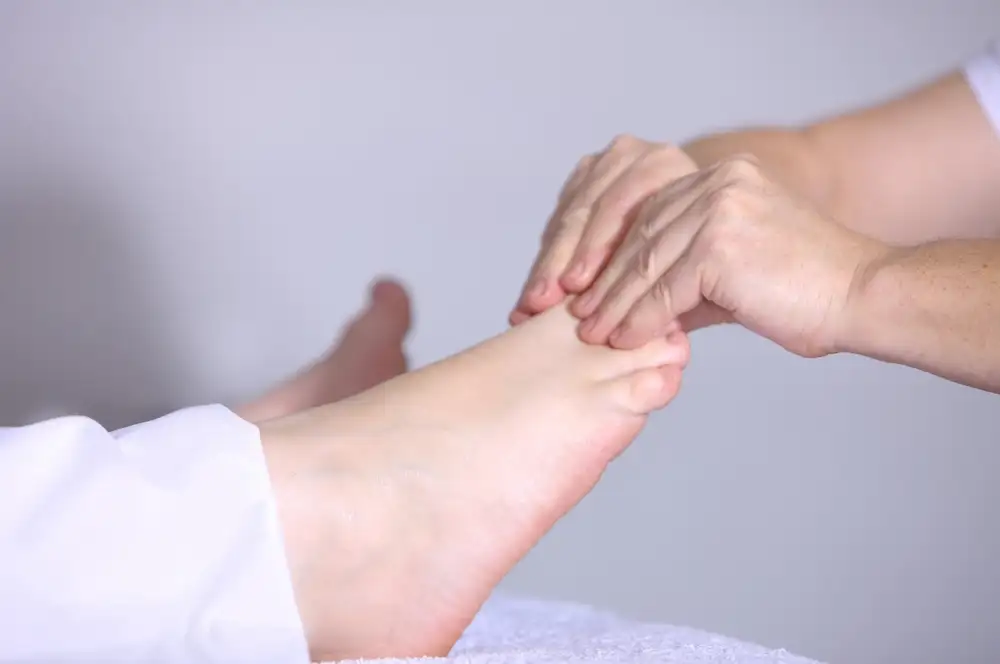Say Goodbye to Bunions: Top Remedies for Juanetes Revealed!

Bunions, medically known as hallux valgus, are bony bumps that form on the joint at the base of the big toe. They develop when the big toe leans towards the second toe, causing the joint to stick out and become painful. Bunions can make it difficult to walk or wear shoes comfortably, impacting one's quality of life. This common foot condition affects millions of people worldwide, with women being more prone to developing bunions than men. Understanding the causes and symptoms of bunions is crucial in managing and preventing their progression.
Causes and Symptoms of Bunions
Bunions, also known as hallux valgus, are bony bumps that form on the joint at the base of the big toe. They develop when the big toe pushes against the adjacent toe, causing the joint to stick out and become misaligned. The exact cause of bunions is not always clear, but they are often linked to wearing tight or narrow shoes that squeeze the toes together. Genetics can also play a role in predisposing individuals to developing bunions. Symptoms of bunions include pain, swelling, redness, and restricted movement of the affected toe. Over time, bunions can worsen and lead to difficulty walking or finding comfortable footwear.
Importance of Seeking Medical Advice
Seeking medical advice is crucial when dealing with bunions. A healthcare professional can accurately diagnose the condition and provide personalized treatment options based on the severity of the bunion. They can also offer guidance on managing symptoms, preventing further progression, and addressing any underlying issues contributing to the development of bunions. Early intervention can help alleviate discomfort and prevent potential complications, making it essential to consult a healthcare provider for proper evaluation and care.
Home Remedies for Bunions
1. Epsom Salt Soak: Soaking your feet in warm water mixed with Epsom salt can help reduce inflammation and relieve pain associated with bunions.
2. Ice Pack Therapy: Applying an ice pack to the bunion area for 15-20 minutes several times a day can help reduce swelling and discomfort.
3. Toe Spacers: Using toe spacers or orthotic devices can help realign the toes and reduce pressure on the bunion.
4. Bunion Pads: Placing bunion pads or cushions over the affected area can provide cushioning and protection, reducing friction and pain.
5. Foot Exercises: Strengthening exercises for the toes and feet can help improve flexibility and reduce strain on the bunion.
6. Turmeric Paste: Turmeric has anti-inflammatory properties that may help alleviate bunion pain when applied as a paste to the affected area.
7. Proper Foot Hygiene: Keeping your feet clean and dry, wearing moisture-wicking socks, and choosing breathable footwear can prevent further irritation of bunions.
These home remedies can complement medical treatments and lifestyle changes to manage bunions effectively.
Wearing Proper Footwear
Wearing proper footwear is crucial in managing bunions. Opt for shoes with a wide toe box to give your toes room to move freely. Avoid high heels and narrow, pointed shoes that can exacerbate bunion pain and deformity. Look for shoes with good arch support and cushioning to reduce pressure on the bunion. Custom orthotic inserts can also help distribute weight evenly and provide additional support. Remember to choose shoes that are comfortable and properly fitted to prevent further discomfort and progression of bunions.
Exercises and Stretches for Bunions
1. Toe stretches: Sit comfortably with your feet flat on the floor. Use your hands to gently pull your big toe away from the others, holding for 10-15 seconds. Repeat this stretch several times on each foot to help improve flexibility in the joint.
2. Toe separators: Placing toe separators between your toes can help realign them and relieve pressure on the bunion. Wear these separators while relaxing at home or even during sleep to promote proper toe alignment.
3. Calf stretches: Tight calf muscles can contribute to bunion discomfort. Regularly stretching your calf muscles by standing facing a wall, placing one foot forward and bending the front knee while keeping the back leg straight, can help reduce strain on the bunion.
4. Ankle circles: Sitting comfortably, lift one foot off the ground and rotate your ankle in circular motions for 10-15 repetitions in each direction. This exercise helps improve ankle mobility and may alleviate some bunion-related discomfort.
Incorporating these exercises and stretches into your daily routine can help strengthen the muscles surrounding the bunion, improve flexibility, and potentially reduce pain associated with bunions over time. Remember to consult with a healthcare professional before starting any new exercise regimen, especially if you have existing health conditions or concerns related to bunions.
When to Consider Surgical Options
In some cases, bunions may become severe and cause persistent pain or deformity that interferes with daily activities despite conservative treatments. If you have tried various non-surgical methods without success and your bunion continues to worsen, it may be time to consider surgical options. Surgery is usually recommended when the bunion causes severe pain, limits mobility, or leads to other foot problems. A podiatrist or orthopedic surgeon can evaluate your condition and determine if surgery is the best course of action. It's important to discuss the potential risks, benefits, and recovery process with your healthcare provider before making a decision about bunion surgery.
In conclusion, bunions can be a painful and uncomfortable condition that affects many individuals. Seeking medical advice is crucial to properly diagnose and manage bunions. Home remedies such as ice packs, toe spacers, and proper footwear can provide relief from symptoms. Regular exercises and stretches targeting the feet and toes can help strengthen muscles and alleviate bunion discomfort. If conservative treatments fail to improve the condition, surgical options may be considered as a last resort. Remember to prioritize foot health by wearing comfortable shoes with adequate support to prevent or alleviate bunions. Consult a healthcare professional for personalized advice on managing bunions effectively.
Published: 09. 04. 2024
Category: Health



